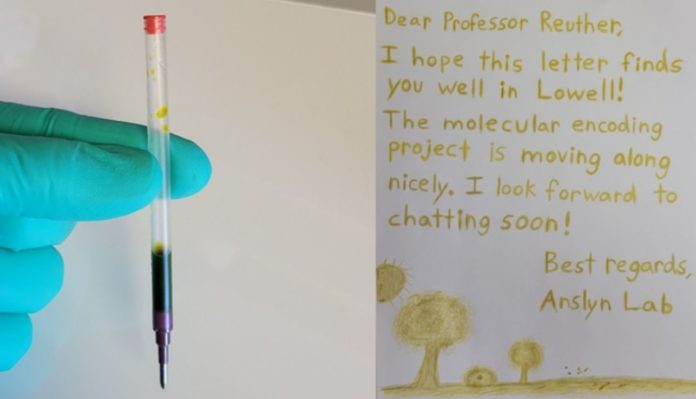Encrypting files using digital keys has become more popular as people and businesses worry about important data being stolen.
Researchers have now created a robust molecular encryption key using sequence-defined polymers that are formed and disassembled sequentially, as reported in ACS Central Science.
Using the molecular key hidden in the ink of a letter, they decrypted a file that contained content from The Wonderful Wizard of Oz.
The use of encryption algorithms is essential for the safe transmission of data since these programs scramble the data so that it can be deciphered only with the appropriate password or digital encryption key.
Researchers have been working on molecular methods to transfer and store encryption keys across long distances, including DNA chains and polymers.
Nucleic acids currently store more data than polymers.
The problem with polymers is that as they become longer, the efficiency of storing more data with each successive monomer decreases, making it very challenging to extract the information they’re hiding using analytical tools.
Recently, Eric Anslyn and colleagues created a technique to sequentially break down polymers, making it simpler to detect their structures using liquid chromatography-mass spectrometry (LC/MS).
To see if the method might be used to decipher a complex molecular encryption key, Anslyn, James Ruether, and others intended to test it on a combination of unique polymers that had been concealed in ink.
First, the researchers created a binary key of 256 characters that could be used in an algorithm to encrypt and decrypt text files.
The key was then encoded into polymer sequences of eight oligourethanes that were each 10 monomers long.
Only the eight monomers in the middle held the key, while the two monomers at the ends served as placeholders for synthesis and decoding.
Each sequence contained a distinct, isotopically tagged “fingerprint” monomer that served as the decoding placeholder, indicating where each polymer’s stored information fit in relation to the final digital key’s ordering.
The researchers then combined the eight polymers and determined the original structures and digital key using sequential depolymerization and LC/MS.
Finally, one team of researchers created an ink by combining the polymers with isopropanol, glycerol, and soot. They then utilized this ink to write letters to other team members who were unaware of the encoded information.
These researchers successfully reconstructed the binary key after removing the ink from the paper and using the same sequential analysis.
The algorithm was then deciphered using the encryption key, producing a plain text version of The Wonderful Wizard of Oz.
According to the researchers, their findings show that molecular information encryption using sequence-defined polymer mixes is reliable enough for practical uses like concealing secret messages in written correspondence and plastic products.
Source: 10.1021/acscentsci.2c00460
Image Credit: ACS Central Science 2022
You were reading: Scientists Have Figured Out a New Way to Hide Secret Messages
